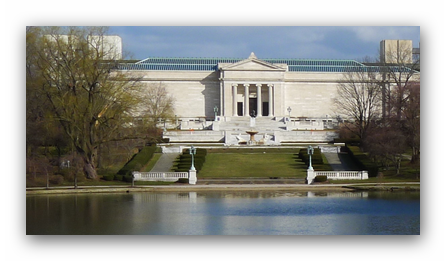Sep 3 2016 - Jan 8 2017
Cleveland, OH
The loan of this ancient, superbly carved Native American pipe allows the museum to celebrate the achievements of the region’s first artists during its centennial year. An icon of Eastern Woodlands archaeology, the pipe was excavated by staff of the Ohio Historical Society in 1901 from the most lavish of the burials found in the Adena Mound, near Chillicothe. Made of bicolored pipestone, it takes the form of a standing male—perhaps an ancestor, mythical hero, or shaman—bedecked in insignia of high rank: large spool-shaped ear ornaments, a loincloth with a feather bustle at the back, and a bifurcated hairdo. Tobacco, used by natives today and in the past to petition other-than-human forces, was burned in a bowl between the figure’s feet; the smoke traveled through a tube within the body to the mouthpiece, a small hole on top of the head. Originally attributed to the Adena culture (800 BC‒AD 1), the pipe instead may be the work of a gifted sculptor of the related, somewhat later Hopewell culture (200 BC‒AD 400), famed for its geometric earthworks. In 2013, the pipe was designated Ohio’s official state artifact.
Credit: Exhibition overview from museum website.
Exhibition Venues & Dates
Sep 3 2016 - Jan 8 2017
Cleveland, OH
